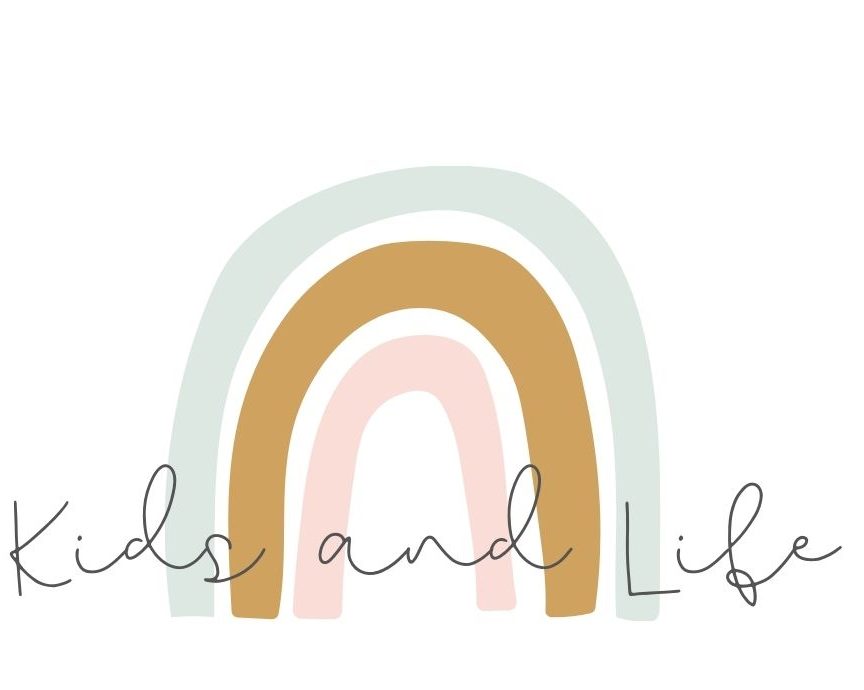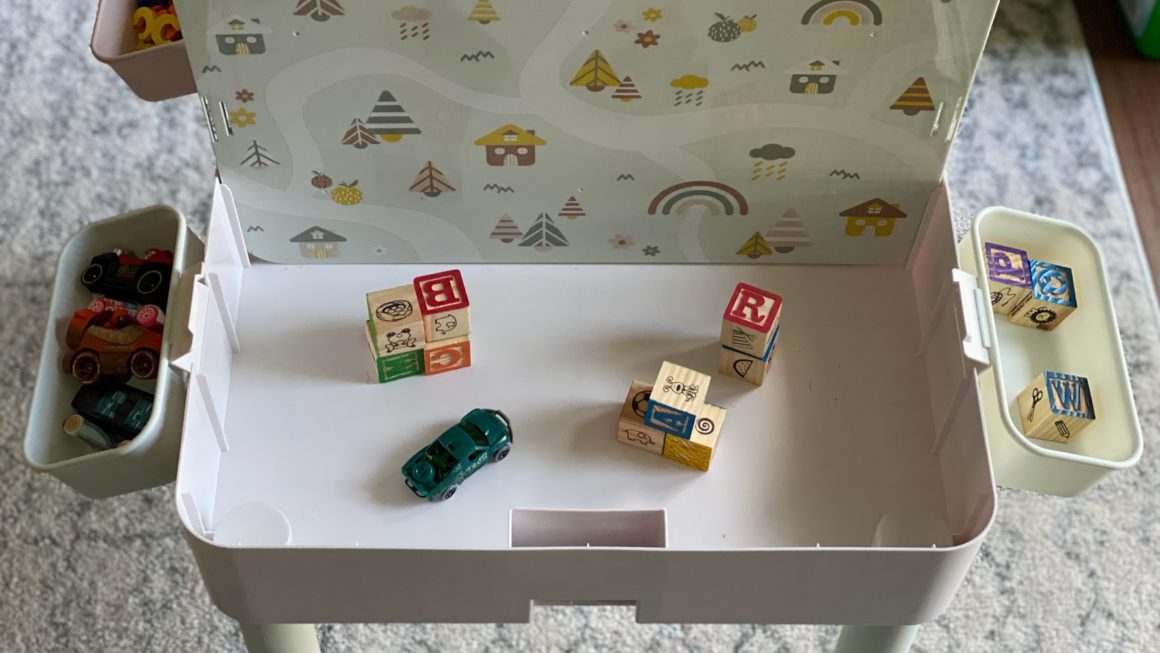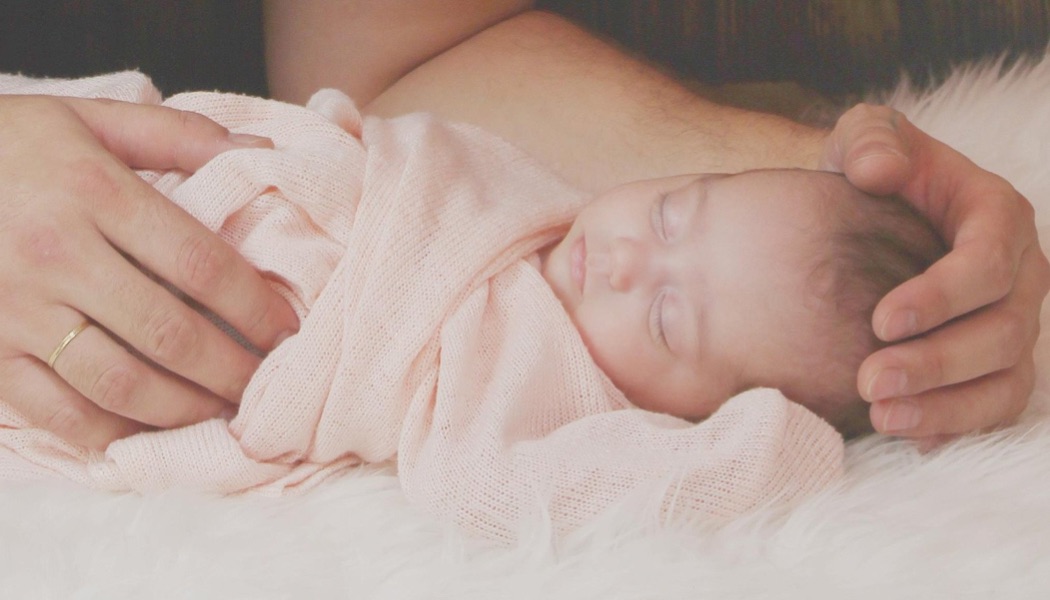This post contains affiliate links and I may receive commission when you click on links and make purchases. However, this does not impact the price you pay!
I just love pieces of equipment that are multipurpose. This post is about an awesome tool that could serve many age ranges through lots of activities. The table is called the Carry-Play Portable Kids Table from Kingdom Playroom. Read on for more details on how to use this lovely table to strengthen a child’s skills!

The Table and Features
The Carry-Play Table arrives as a little carrying case, which is adorable and practical. Inside, there are legs that easily attach to create your table. I love that there are three heights: the height of the case or containers, the height when you attach one set of legs, and the height with the second set.
The table has two removable tops that have compartments underneath. These can be utilized for so many activities including crafts, sensory play, building spaces. Along with these large compartments, there are 4 attachable side containers for accessories. I love putting the manipulatives or materials in these side compartments. It just makes the activity neater.
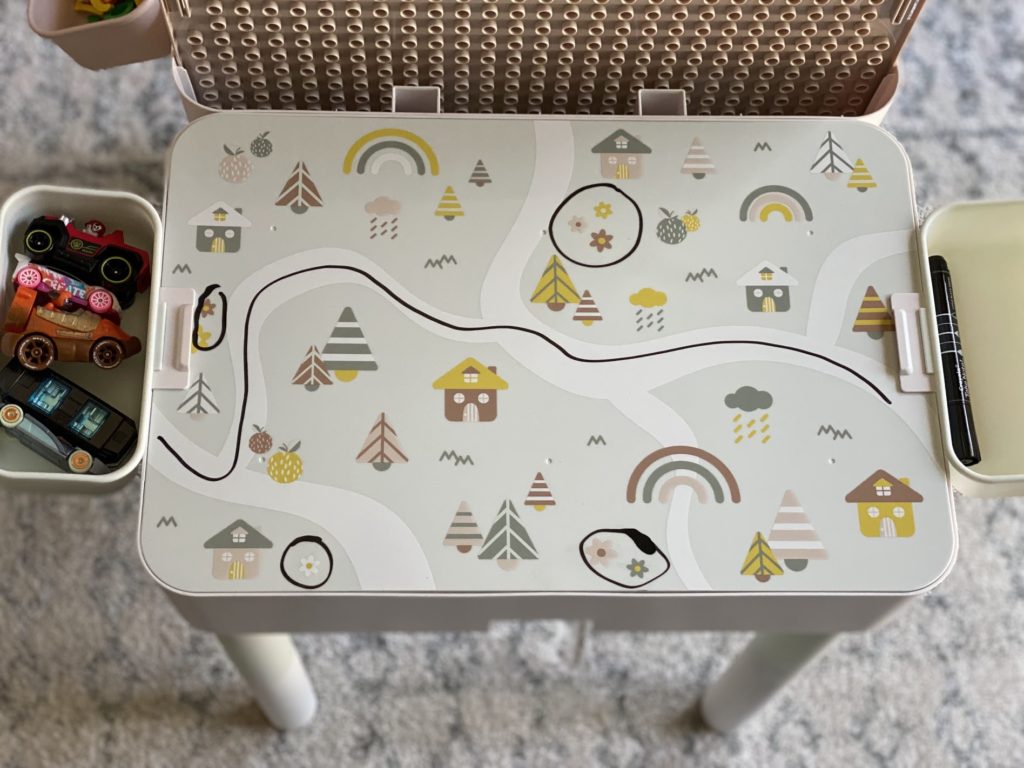
The tops themselves are compatible with dry-erase markers and have designs that foster opportunities for search and finds, roads, or story creation.
On the flip side of the tops are duplos and lego boards! This feature alone makes me pumped up. I love having a large surface for building to promote success. But even better, the tops go into slots to create an automatic vertical surface. Wammy. (Keep reading for more on that.)
Therapeutic Use
I think what I love most about this little table is the many ways you can work on developmental goals. Because of the features I mentioned, it serves a range of ages and abilities. Here are some ideas on how to use the table to work on the following skills.
Fine Motor Activities!
By now you might be thinking, Jaclyn… its just a table. Settle down.
I just think a kids’ sized table is a must-have in any play room or therapy space. This can be a surface that kids can complete any type of fine motor task including crafts, building, connecting manipulatives, homework, puzzles, pretend play. With the appropriate sized chair, your child can engage at the right height for them and this allows for excellent opportunities for positioning and posture!
The side compartments provide the opportunity for extra manipulatives to be available, but not overstimulate a child’s visual sense when they are engaged. Have you even noticed when there is so much visual clutter, it is hard to concentrate? By putting the extra pipe cleaners, buttons, googly eyes, pom poms, or crayons in separate containers, you’re allowing for more creativity because it is less busy. This also helps if your child has additional visual or motor impairments. The child can then grasp an object out of a container versus on the table, combined with all the other materials. Throw in a pair of tweezers, and you’ve got yourself a lovely little fine motor set up.
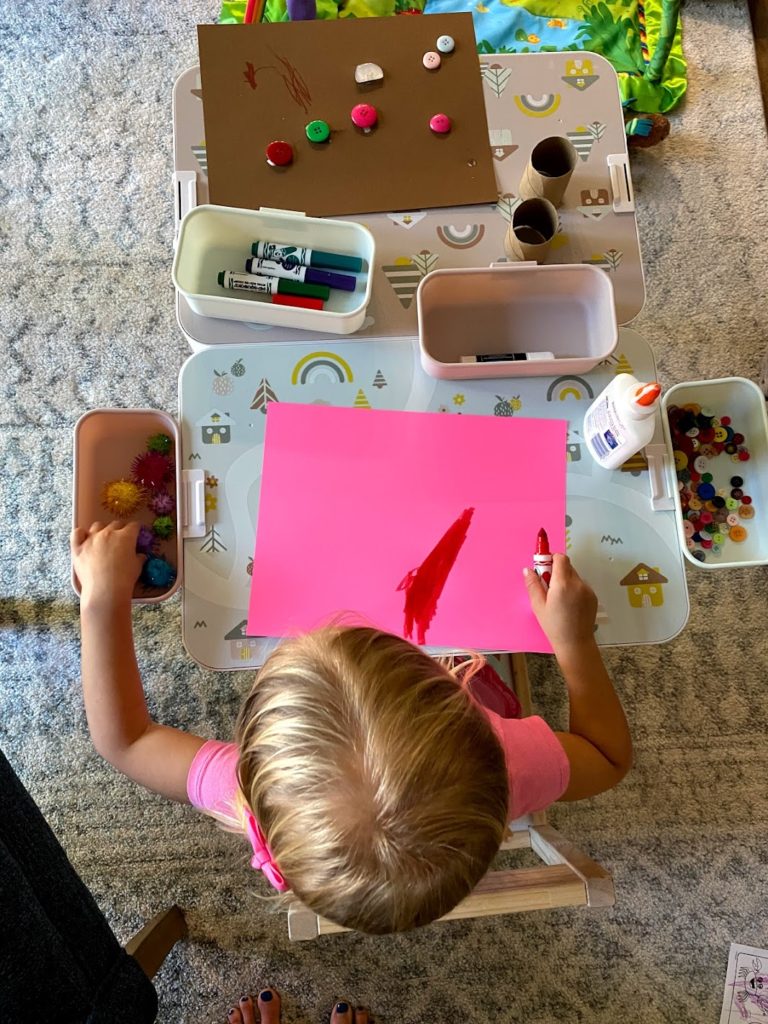
The two sides offer a broad space to work at. This is wonderful if you have multiple children. You can encourage language building and social interaction by requesting certain pieces or manipulatives that might be located elsewhere.
Vertical Surface!
The removable lids that turn into a vertical surface might be my favorite feature about this table. If you follow me on social media at all, you probably know that I love vertical surface play. It offers so many opportunities for sneaky skill building such as shoulder strengthening, core stability, midline crossing, and visual perception.
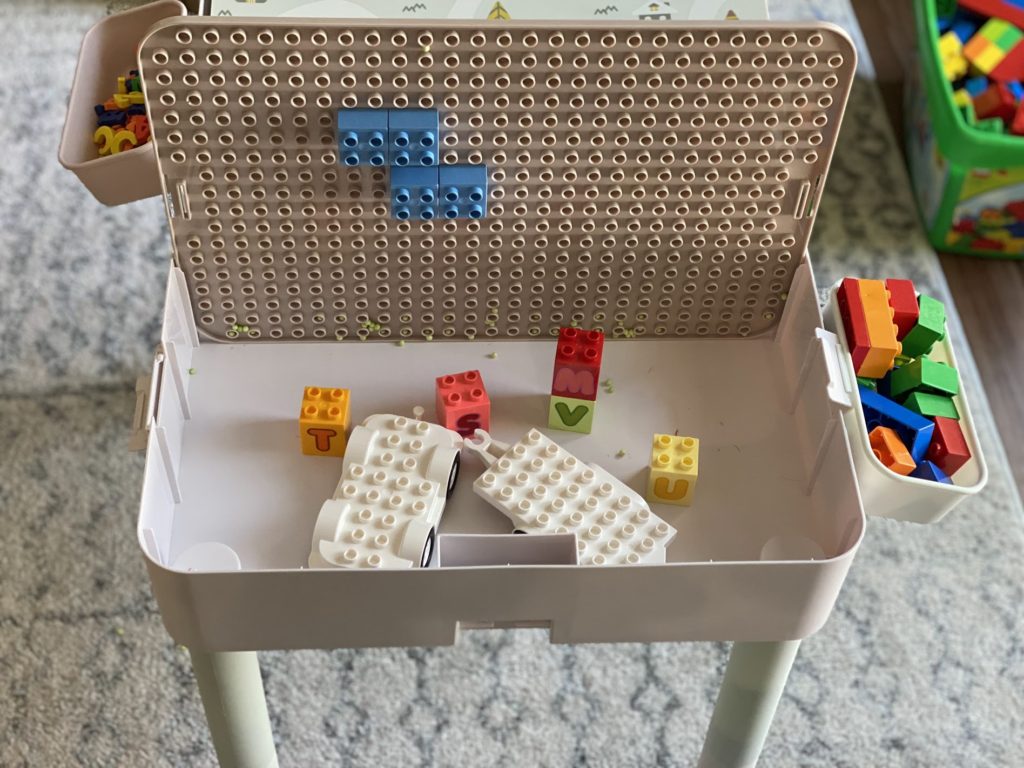
You can use the smooth top to color on, tape paper to it for drawing, put shaving cream or finger paint on and go wild! Or, flip them over and have a built in vertical surface for Duplo or Lego play- an OT’s favorite! With this activity, you’re also encouraging finger strength and dexterity.
Sensory Play!
Would I even be an OT if I didn’t talk about sensory play? No. I wouldn’t. Sensory play is a way to engage the child’s tactile system through various textures and substances. The tactile system can directly support motor skills and give feedback to the brain about something. It can also help a child learn and understand how much force is needed for a task, leading to improved coordination. Sensory play is also the PERFECT way to incorporate tool use, which is so important for fine motor skills development and visual motor integration. Lastly, tactile play can be calming and regulating for many kids.

As a mom, I’ve always been looking for an easier way to promote sensory play without feeling so stressed out about the mess. This table is the perfect option. I love that I can literally close the lid and forget about it until they want to play with it again next time!
If your child is sensitive to tactile play, start with non-threatening substances such as dry beans, noodles, buttons, sequence, or just straight water. Then slowly get smaller in size- dry rice, pebbles, dry sand. If you’re feeling really brave, go a little squishier such as play doh, Mad Mattr, Kinetic Sand, water beads, and (dare I say) slime! And lastly, try combinations of any of the above for a more challenging sensory experience. Pro tip: put a sheet down under this lovely little table or do this one outside. 😉
Writing!
This is an excellent surface to work on writing, drawing, or coloring. The cuteness honestly just makes it fun. If this table is part of a child’s play, coloring and drawing become playful, which is what it’s all about really. Check out this post on ways to work more on handwriting that don’t actually work on handwriting. Set your child up at their own “work station” with paper and allow them to just explore! Or, as mentioned before, use some dry-erase markers for some table drawing!
Another thing I discovered with this table is a built-in slant board! A slant board* is a handwriting tool used by many occupational therapists to support the forearm and wrist, provide optimal visual access, and improve pencil grasp. The removable tops and the containers transform a completely horizontal surface to a perfect slant, allowing the child to have more stability when working on drawing and handwriting. (You may need to tape the paper to the surface.)
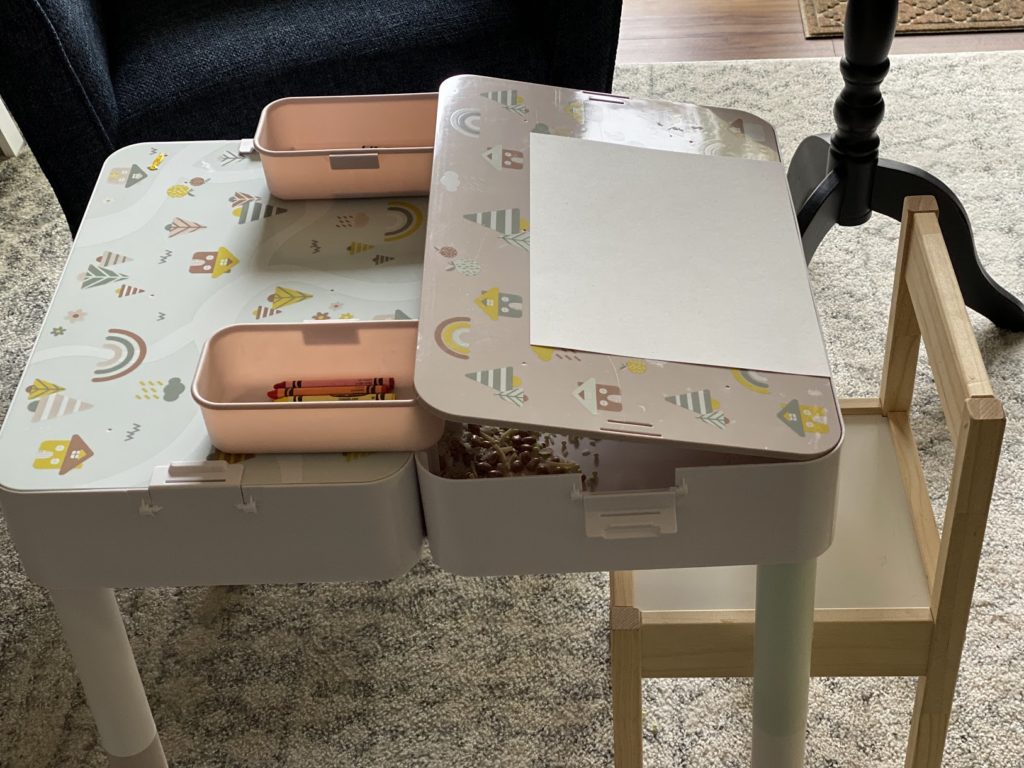
*Full disclosure, there is limited evidence on the effectiveness of a slant board in improving letter formation. However, additional support at the child’s arm and a propped visual space, can just create a helpful tool. Just don’t hang your hat on slant boards to make beautiful penmanship or fix significant writing difficulties.
Sitting or Standing Endurance!
My favorite thing about this table is the ability to make it grow. There are three heights that this table can be used at, all allowing for skill development.
Without legs, the table can be opened and flat, or closed to create the height of carry-on luggage. With these options, a child can work on sitting endurance while completing any of the abovementioned activities. A child or baby working on tall kneeling, can easily come from sitting to tall kneel at this surface.
With one set of legs, a larger child can work at the table in two positions: tall kneel and half kneel. Both of these positions targets core stability and strengthening. They can both be preparatory activities to work on gross motor skills as well.
And with both sets of legs, it is the perfect height to work on standing endurance while the child works. Have them stand on the ground or add a pillow to create an unstable surface. This makes their proximal muscle groups (hips, core, shoulders) work a bit harder. And lastly, with a chair, you can work on sit to stands to access the objects at the table.
There you have it. There are so many opportunities for skill development with this one tool. If you are interested in looking into it more, check them out here. I’m interested in hearing from you! What will you use your Carry Play Table for?
